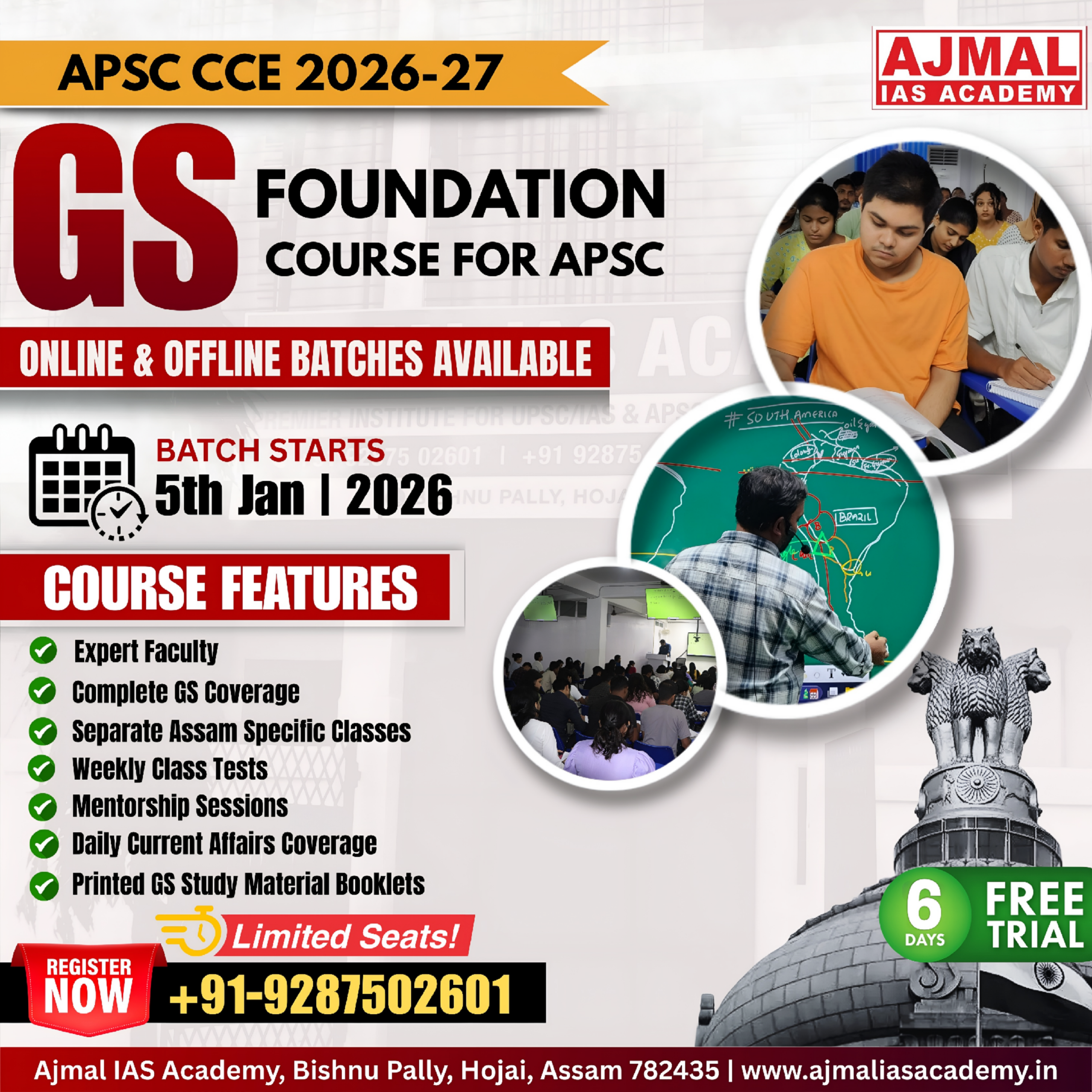Relevance for UPSC (Paper: GS-III – Infrastructure; Subject: Urban Development & Mobility)
India’s cities are witnessing a metro revolution—a transformation of urban transportation that carries deep implications for mobility, climate, economy and inclusive growth. The growth of metro networks and other mass rapid transit systems is one of the key elements of modern urban infrastructure, making it highly relevant for the Civil Services Examination.
The Changing Urban Mobility Landscape
In 2014, India’s operational metro network stretched just 248 km across five cities. By May 2025 it had surged to over 1,000 km across 23 cities. Daily ridership has likewise soared—from about 28 lakh commuters in 2014 to over 1.12 crore by 2025. This isn’t just numbers: it means cities like Delhi Metro, Bengaluru Metro and Mumbai Metro are reshaping how people live, work, and move.
What is Mass Rapid Transit?
Some key terms and features:
- Mass Rapid Transit System (MRTS): Urban transport systems with dedicated right-of-way (either elevated or underground) and high capacity — e.g., metro rail.
- Metro Rail: Electric rail system in urban area, often fully separated from road traffic, frequent service, large capacity.
- Ridership: Number of persons using the system—shows how much the system is trusted/used.
- Network length: Total route kilometres in operation; longer networks mean more coverage.
- Last-mile connectivity: The links from metro station to final destination; vital for effective use.
Why has Metro Growth Accelerated?
Several factors:
- Urbanisation: More people living in cities; congested roads necessitate shift to mass transit.
- Government policy & funding: Central schemes and approvals have made metro projects easier and faster.
- Environmental imperative: Metro systems help reduce vehicular emissions by shifting large numbers to electrified public transport.
- Economic benefits: Improved connectivity leads to higher productivity, reduced travel time, and better access to jobs.
- Technology & financing innovations: Use of public-private partnerships, borrowing from multilateral agencies, advanced signalling, etc.
Key Schemes, Frameworks & Institutions
- National Urban Transport Policy, 2006: sets the policy framework for promotion of public transport and non-motorised transport in urban areas.
- Ministry of Housing & Urban Affairs / Urban Transport Wing: the nodal central agency for appraising metro rail projects in India.
- Metro Rail acts in various states (e.g., the Metro Railways (Construction of Works) Act, 1978; or respective state acts for metro corporations) govern the construction, operation and safety of metro systems.
- Public investment instruments: Borrowings, multilateral agency financing (e.g., Asian Development Bank) have supported metro growth.
Case Illustrations
- In cities such as Delhi, Bengaluru and Mumbai, metro rail has become a backbone of urban transport, easing congestion and improving reliability.
- In smaller or tier-2/3 cities, new systems are being introduced—like the priority section of the Indore Metro (inaugurated May 2025) in Madhya Pradesh.
- The large-scale network expansion shows the ambition: in 2025 as per a central press note, metro networks covered 1,013 km across 23 cities.
Challenges & Gaps
Despite progress, there are issues:
- Cost escalation & delays: Metro projects are capital-intensive and often exceed original budgets or timelines.
- Last-mile connectivity often remains weak, reducing the full potential of metro ridership.
- Affordability & fare-recovery: Balancing fare levels with operating costs and financial sustainability is tricky.
- Integration with other transport modes: Seamless transfer with buses, suburban rail and non-motorised transport is still under-developed.
- Urban governance & land acquisition issues: In dense city spaces and older cities, acquiring land or tunnelling becomes complex.
India’s Road Ahead
- Cities must prioritise integration—metro lines need to connect with bus rapid transit, pedestrian zones, cycle tracks so that the full “mobility ecosystem” works.
- Focus on sustainability: Electric traction, regenerative braking, using renewable energy in stations and trains.
- Data-driven planning: Using travel demand forecasting, big data on ridership and emerging corridors in fast-growing cities.
- Smart financing models: Value capture, transit-oriented development (TOD) around stations to generate real-estate revenue and offset costs.
- Equity and inclusion: Ensuring access to all segments (women, elderly, low-income) and ensuring metro serves underserved suburbs and peri-urban zones.
Exam Hook :
Metro systems in India are not just about trains — they are about shaping the future of urban life, and the challenge is to make them inclusive, efficient and financially sustainable.
Key Take-aways:
- Network length jumped from ~248 km (2014) to ~1,000 km+ (2025) across ~23 cities.
- Daily ridership has increased manifold, crossing over 1 crore commuters per day.
- Metro growth is underpinned by policy frameworks (National Urban Transport Policy 2006), institutional support (Ministry of Housing & Urban Affairs) and financing mechanisms.
- Challenges remain—costs, last-mile connectivity, integration with other modes, equitable access.
- The future focus must be on smart financing, transit-oriented development, sustainability and integration.
UPSC Mains Question:
“In the context of rapidly expanding metro rail networks in Indian cities, examine how transit-oriented development and value capture financing can enhance sustainability and affordability. (15 Marks)”
One-Line Wrap:
India’s metro expansion signals a shift in urban mobility—how we execute it, integrate it and sustain it will determine whether cities become liveable and inclusive for all.
Share This Story, Choose Your Platform!
Start Yours at Ajmal IAS – with Mentorship StrategyDisciplineClarityResults that Drives Success
Your dream deserves this moment — begin it here.


